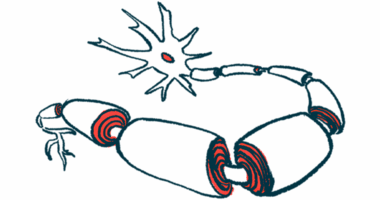Rituximab Leads to ‘Dramatic’ Recovery in Boy with Aggressive RRMS, Case Study Reports

Treatment with rituximab — sold as Rituxan in the U.S. by Roche and Biogen, and as MabThera by Roche in Europe — reversed disease course in a “dramatic fashion,” leading to complete remission in a 12-year-old boy with aggressive relapse-remitting multiple sclerosis (RRMS), a case report states.
The report, “Rituximab as Rescue Therapy for Aggressive Pediatric Multiple Sclerosis,” was published in the journal Case Reports in Pediatrics.
Almost 1 in 10 MS patients has a history of disease onset as a child. But while numerous therapy options exist for adults with MS, treatments available to children are limited.
One emerging potential therapy is rituximab, approved to treat various types of blood cancer and used off-label in some people with MS. It is a monoclonal antibody that targets CD20, a protein found on immune B-cells, triggering their death. Because B-cells can contribute to inflammation and myelin damage in MS, rituximab may be helpful in treating the disease.
A number of studies examining rituximab’s use in adults with RRMS have reported promising results.
Researchers in Greece described the case of a 12-year-old boy with particularly aggressive RRMS, who was unable to attain remission before being treated with rituximab.
Discuss the latest research in the MS News Today forums!
The child, previously healthy, was admitted to P & A Kyriakous Children’s Hospital in Athens with complaints of headache, ataxia (lack of voluntary movement coordination), and paresthesias (burning or prickling sensations).
Magnetic resonance imaging (MRI) scans depicted numerous active lesions in the brain and one in the spinal cord. Based on these finding, a provisory diagnosis of clinically isolated syndrome (CIS) — a first MS manifestation — was made. He was prescribed gamma globulin and pulses of corticosteroids, which were subsequently tapered.
Although his condition quickly improved and MRI lesions partially resolved, the boy relapsed two months later and symptoms returned. Scans showed a worsening in brain damage and new lesions.
Treatment with corticosteroids and cyclophosphamide were of little help, and he kept having relapses (every four to six weeks) with evidence of clinical and radiological deterioration.
“On every occasion, his condition would partially improve after corticosteroid pulse therapy, only for a following relapse to occur while tapering the oral steroids,” the scientists reported.
Eight months after the start of therapy, his condition had declined significantly. He was unable to walk alone for more than 50 meters (about 164 feet), and had vision problems (double vision and repetitive, uncontrolled eye movements), slurred speech, and difficulties with movement affecting his left side.
His disability degree, as measured by an EDSS score, was 6.5 — more than midway along this scale. Numerous old and new lesions across the brain and cervical spinal cord were evident.
Doctors were particularly concerned with a lesion in the brainstem (the posterior part of the brain that connects it with the spinal cord) that was pressing against the pyramidal tracts. These are bunches of nerve fibers responsible for transmitting information from the cerebral cortex to the spinal cord and brainstem, and are fundamental to controlling movement.
As the boy’s life was at risk, doctors decided on a “rescue therapy” with rituximab, given as weekly infusions into the vein for one month. Soon after the second infusion, the boy’s symptoms started improving. By the end of the treatment (a total of four doses) “his condition had improved dramatically,” the researchers wrote; he was “troubled only by a mild tremor and nystagmus [repetitive eye movement.”
No new lesions were found on MRI scans, and the existing ones were either fewer in number or significantly smaller. None of the evident lesions had MRI contrast enhancement, indicating repair of the myelin coating around nerve fibers.
Given the lack of published information about rituximab’s use in children with MS, treatment continued with conventional immunomodulating agents, with a cyclophosphamide course followed by mycophenolate mofetil (sold as CellCept by Genentech).
Three years after his diagnosis and two years after being treated with rituximab, the teenager remains free of symptoms, with an EDSS score of zero. “He did not experience any further relapses, and subsequent brain and spine MRIs showed further improvement,” the team reported.
Researchers believe that B-cell-related inflammation, which was uncontrolled in this child since disease onset, “is probably the reason why rituximab had such an impressive effect in our patient’s condition,” they wrote.
B-cell-depleting therapies like rituximab or Ocrevus (ocrelizumab; by Genentech), for this reason, could be “a promising therapeutic approach for pediatric MS, especially at the early stages of the disease, when B-cell-related phenomena are pronounced,” they concluded, and warrant clinical trials to further examine their effectiveness in young patients.
“Newer anti-CD20 [B-cell] monoclonal antibodies, such as ocrelizumab, feature an enhanced antibody-dependent cellular toxicity when compared to rituximab, with a proven efficacy in adult MS patients,” the researchers added.






